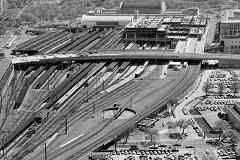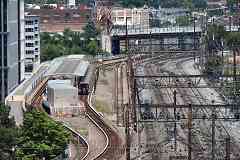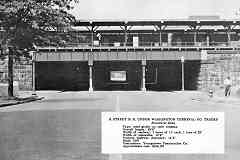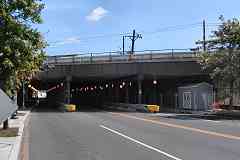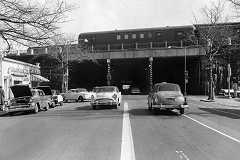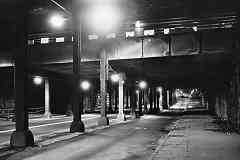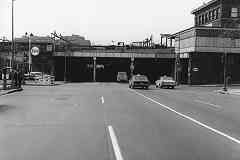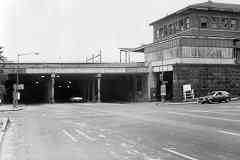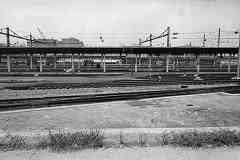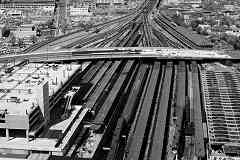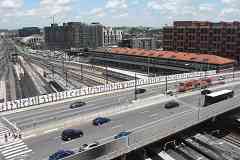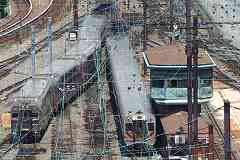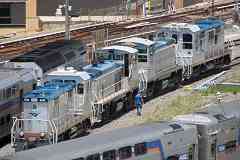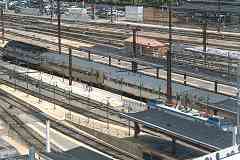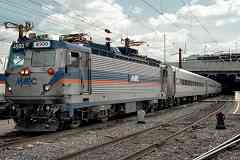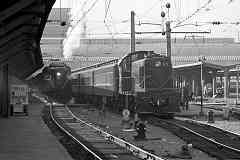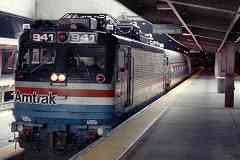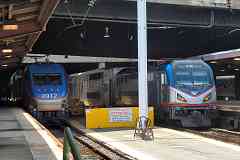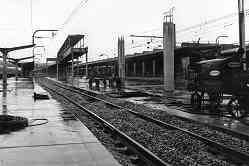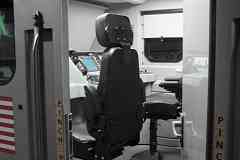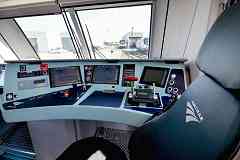|
Public funding for roads and airports, plus wage/price controls took
their toll on railroads. By 1974 the REA office had closed here, and
the building, broken windows and all, was left to deteriorate, sadly
like much of the Union Station area.
Assigning simple letter names to streets is both democratic and a way
to avoid intersecting numbered roadways. In the Maspeth area of New
York City, 60th Street, Avenue, Road, Drive, Lane, Place, and Court
confusingly intersect each other within a stretch of less than 1000
feet. The trouble is single letters are difficult to hear distinctly,
much to the chagrin of physicist Richard Feynman upon his first visit
to Washington while consulting about the space shuttle Challenger
disaster. For an important NASA meeting, a taxi took Feynman to what
was an empty lot on 8th Street rather than the proper office on H Street.
Links:
DDOT source photo,
Every Street Is Named 60
|
